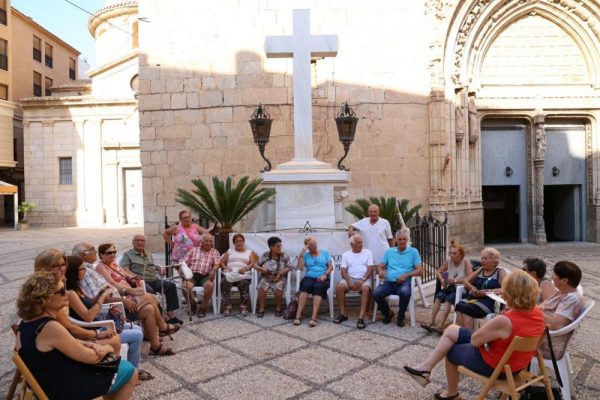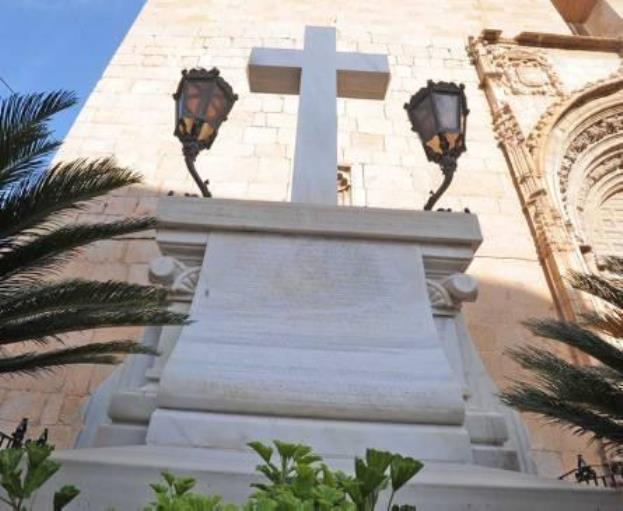The custodians of la Cruz de los Caídos, the Cross of the Fallen in Callosa del Segura, have now maintained their vigil for 7 Generalitat months.
After the depths of winter they are now having to endure the oppressive heat of the summer as they maintain their presence by the iconic monument, situated in Plaza de España, directly outside St Martin’s church, so as to prevent its removal by the town council.
With rosary beads in one hand and their mobile phone in the other they say they will not allow the monument to be moved from its present location as they continue with their peaceful resistance. As they share moments of prayer one member of the group said that “the cross represents their Christian values. We have to remain vigilant at all times in case we have to raise the alarm and call in neighborhood reinforcements.”
They fear that at any moment the cranes will return to try to take the Cross away, something that the municipal government wants to do, based, they say, on the Law of Historical Memory.
After almost a year and a half the debate is still as heated as ever with opinions as still wide as they ever have been.

One representative of la Plataforma en Defensa de la Cruz, the platform in defence of the cross, shouted down the mayor, Fran Maciá, during the last meeting of the town council saying that if he wants to remove the monument he needs to be bold and tell the residents when he intends to do so. He also said that the mayor has failed to respect the wishes of the people and asked him to respond to the many questions that still remain unanswered.
Mediation meetings to address the whole issue are currently in deadlock, however it is hoped that they will resume in September.
Meanwhile the Generalitat of Valencia has said that it supports the removal of the Cross even though although it no longer bears Francoist plaques and as such the General Directorate of culture and heritage has given the go-ahead for its transfer to ‘a more appropriate place’.
The cross has long been a focal point for demonstrations organised by Spain’s fascist movement, the Falange (“Phalanx”), who, for many years have demanded that it remains in place in the centre of the town.
However those demonstrations took place while the cross still carried Commemorative engravings and plates in support of the phalanx, removed in 2016, as well as a carving which alluded to José Antonio Primo De Rivera, who formed the organisation in 1933.
The Generalitat says that the cross would be better situated in the town cemetery.





